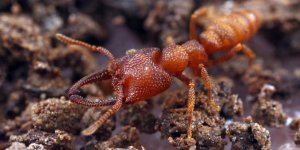| News / Science News |
Exercise in pregnancy improves health of obese mothers by restoring their tissues
Researchers at the University of Cambridge, who led a new study, say the findings reinforce the importance of an active lifestyle when planning pregnancy.

Exercise in pregnancy improves health of obese mothers. Photo: Lindsey Marott/Unsplash
In the UK, more than a half of all women of reproductive age and almost a third of pregnant women are overweight or obese. This is particularly concerning, as being overweight or obese during pregnancy increases the risk of complications in the mother, such as gestational diabetes, and predisposes both her and her infant to develop metabolic diseases such as type 2 diabetes in the years after pregnancy.
Exercise is known to improve how the body manages blood sugar levels and thereby reduce the risk of type-2 diabetes and metabolic syndrome in non-pregnant women.
It also has positive effects prior to and during pregnancy, with beneficial outcomes for both mother and her child, preventing excessive gestational weight gain and the development of gestational diabetes, and the need for insulin use in women who have already developed gestational diabetes. However, little is known about the changes that exercise causes to the tissues of obese pregnant mother.
Researchers fed mice a sugary, high fat diet such that they become obese and then the obese mice were exercised. The mice exercised on a treadmill for 20 minutes a day for at least a week before their pregnancy and then for 12.5 minutes a day until day 17 of the pregnancy (pregnancy lasts for around 20 days in mice).
The researchers found that the beneficial effects on metabolic health in obese mothers related to changes in how molecules and cells communicate in maternal tissues during pregnancy.
A moderate level of exercise immediately before and then during pregnancy leads to important changes in different tissues of the obese mother, effectively making the tissues more like those seen in non-obese mothers.
These changes may explain how exercise improves the metabolism of the obese mother during pregnancy and, in turn, may prevent her babies from developing early signs of type 2 diabetes after birth.
The key organs of the mother that were affected by exercise were: white adipose tissue – the fatty tissue that stores lipids and can be found in different parts around the body, including beneath the skin and around internal organs; skeletal muscle – muscle tissue that uses glucose and fats for contraction and movement; the liver – the organ that stores, as well as syntheses lipids and glucose.
Exercise affected key signalling pathways – the ways that molecules and cells within tissue communicate – involved in responding to insulin (the hormone that stimulates glucose uptake by white adipose tissue and skeletal muscle), in storage and breakdown of lipids (fats found in the blood and tissue) and in growth and the synthesis of proteins.
White adipose tissue showed the greatest number of changes in response to exercise in the obese pregnant mouse, being restored to a state similar to that seen in the tissue of non-obese mothers. This suggests that insulin resistance of the mother’s white adipose tissue may be the cause of poor glucose-insulin handling in obese pregnancies.
The findings are different to that seen in non-pregnant animals, whereby exercise typically affects insulin signalling in the skeletal muscle.
In addition, the team’s previous work showed that exercise improves sensitivity to insulin and glucose handling throughout the whole body in the obese mother. It also prevents the development of insulin resistance in the offspring of obese mothers after birth.
Low insulin sensitivity/insulin resistance requires larger amounts of insulin to control blood glucose levels. (University of Cambridge)
YOU MAY ALSO LIKE




